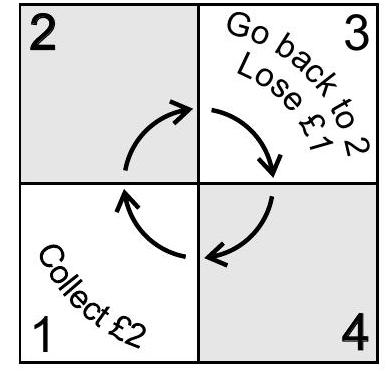Paper 1, Section II, 19H
Let be a Markov chain with transition matrix . What is a stopping time of ? What is the strong Markov property?
The exciting game of 'Unopoly' is played by a single player on a board of 4 squares. The player starts with (where ). During each turn, the player tosses a fair coin and moves one or two places in a clockwise direction according to whether the coin lands heads or tails respectively. The player collects each time they pass (or land on) square 1. If the player lands on square 3 however, they immediately lose and go back to square 2. The game continues indefinitely unless the player is on square 2 with , in which case the player loses the game and the game ends.

(a) By setting up an appropriate Markov chain, show that if the player is at square 2 with , where , the probability that they are ever at square 2 with is
(b) Find the probability of losing the game when the player starts on square 1 with , where .
[Hint: Take the state space of your Markov chain to be .]